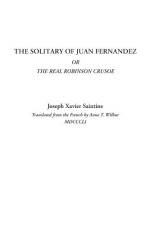‘None,’ said Selkirk; ‘the last lines were effaced;’ and he trembled at the idea of all the dangers he had run in pursuit of this friend, who no longer existed, and of a land which he had never inhabited.
After having satisfied a duty of humanity, that which he had regarded as a debt contracted towards a friend, Selkirk, among other inquiries, let fall the name of Stradling. This time, it was hatred which asked information.
His hatred was destined to be gratified.
In pursuing his voyage, after having coasted along the shores of the Straits of Magellan, Stradling, surprised by a frightful hurricane, had seen his vessel entirely disabled. Repulsed at five different times, now by the tempest, now by the Spaniards, from the ports where he attempted to take refuge, he was thrown, near La Plata, on an inhospitable shore. Attacked, pillaged by the natives, half of his crew having perished, with the remains of his ship he constructed another, to which he gave the name of the Cinque Ports, instead of that of the Swordfish, which it was no longer worthy to bear. This was a large pinnace, on which he had secretly returned to England. For several years past, Dampier had not heard of him.
Selkirk thought himself sufficiently avenged; his present happiness silenced his past ill-will. He even became reconciled to his island.
Each day he traversed its divers parts, with emotions various as the remembrances it awakened. But he was now no longer alone! Arm and arm with Dampier, he revisited these places where he had suffered so much, and which often resumed for him their enchanting aspects.
His companion was soon informed of his history. When he had related what we already know, from his landing to the construction of his raft, and to his frightful shipwreck, he at last commenced, not without some mortification, the recital of his final miseries, which alone could explain the deplorable state in which the English sailors had found him.
By the loss of his hatchets, his ladder, his other instruments of labor, condemned to inaction, to powerlessness, he had nothing to occupy himself with but to provide sustenance. But the sea had taken his snares along with the rest. He at first subsisted on herbs, fruits and roots; afterwards his stomach rejected these crudities, as it had repulsed the fish. Armed with a stick, he had chased the agoutis; for want of agoutis, he had eaten rats.
By night, he silently climbed the trees to surprise the female of the toucan or blackbird, which he pitilessly stifled over their young brood. Meanwhile, at the noise he made among the branches, this winged prey almost always escaped him.
He tried to construct a ladder; by the aid of his knife alone, he attempted to cut down two tall trees. During this operation his knife broke—only a fragment remained. This was for him a great trial.
He thought of making, with reeds and the fibres of the aloe, a net to catch birds; but all patient occupation, all continuous labor, had become insupportable to him.




